Artist Enrico David on why we should ‘befriend the darkness that lies beneath’
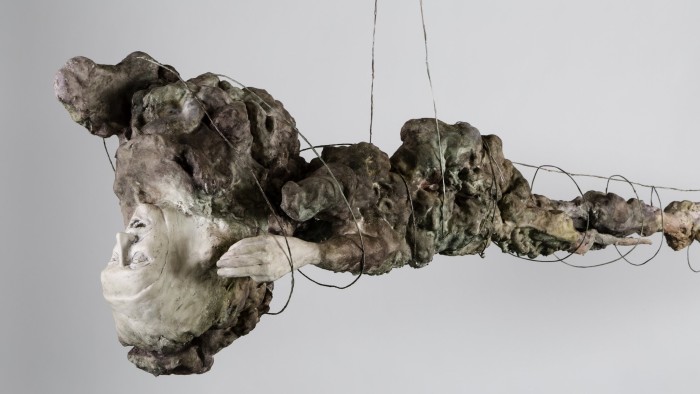
Simply sign up to the Life & Arts myFT Digest -- delivered directly to your inbox.
When Massimiliano Gioni curated the 2013 Venice Biennale, Enrico David was one of many artists whose work had never looked better. With textile hangings, a spectral, abject Harlequinesque portrait and small sculptures, including a diminutive bronze figure from which unfolded a knifelike protuberance that was at once phallus and tongue, the show celebrated an artist who is a true shape-shifter. For David is at once abstract and figurative, painter, sculptor and textile maker. His work is rude yet dainty, manual yet mind-bending, both high and low, decorative and fine.
Although disrespectful of boundaries in practice, in person David is all courtesy. Born in Ancona, Italy, in 1966, he has lived in London permanently since 1988; nevertheless, when he opens the door of his east London studio-cum-apartment, his impeccable bearing, loose blue-and-white striped shirt, blue linen trousers and suede moccasins (without socks, naturally), reveal Latin sartorial flair.
As he walks me through the studio space, the crowded surfaces, where half-finished sculptures jostle with notebooks, chemicals and a roll of toilet paper beneath pinboards tacked with postcards and sketches, tell you that David is a hands-on maker. On the floor stands a mystifying creature — think Nessie crossed with Cerberus — with two heads attached to a serpentine neck pouring out of a bare bum. Such perverse mischief is hard to square with David’s refined manner.
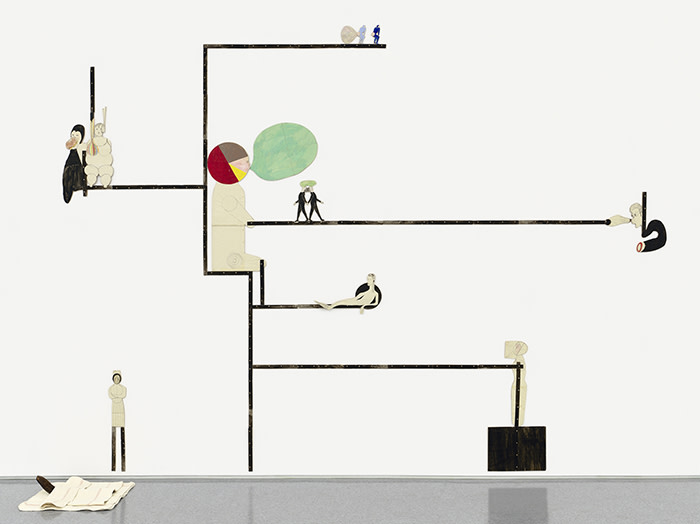
Either because or in spite of his contradictions, David is doing something right. Our interview is occasioned by two shows due to open this autumn in the US. The smaller is at his New York gallery, Michael Werner. The bigger, Gradations of Slow Release, is his largest ever North American museum survey. It opens first at MCA Chicago then travels to the Hirshhorn Museum in Washington DC. “It’s an amazing privilege,” David replies when I ask him about this important US vitrine, as we settle either side of a wide table in the open-plan apartment that leads off his studio. Here, a cornucopia of patterns flow across sofa, rug and pictures in a joyful anti-minimalism that reflects David’s no-holds-barred imagination.
The museum show, he continues, is a chance for him to see work he has made “at different moments of my life — the discordances and harmonies”. He expects the experience to be “quite emotional and quite unnerving”.
Other than his ceaseless, whimsical, unresolved interrogation of the body, gender and sexuality, David steers clear of overt political statements. Yet when asked about his experience of working in the US, he instantly brings up “the dark political climate” of Washington and the “very strange” sensation of seeing the US Capitol from the Hirshhorn’s windows.
When I venture that his own work shies away from politics, his reply is pointed. “There are now a vast number of ways of expressing your [political] opinions, and look where that’s brought us.” He speaks as one of the few artists who has no social media presence. “Why would I do Instagram? I make things in the real world.”
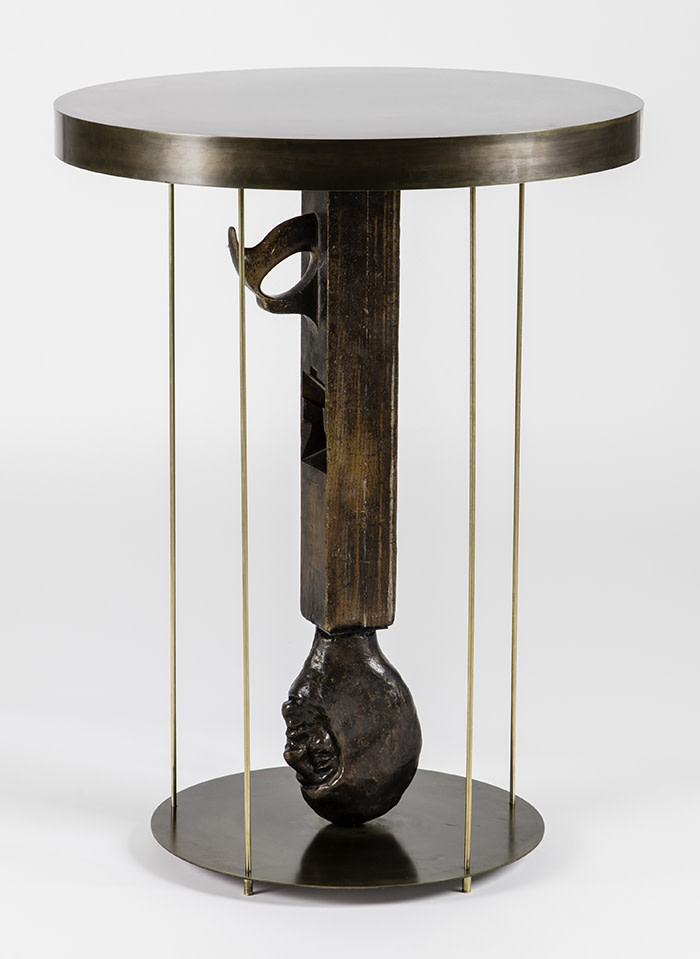
Yet his studio is no ivory tower. “The creative act is one of the most empowering sovereign gestures you can make. But it’s not about detaching yourself from the EU like Brexit. That is a caricature of regaining sovereignty.”
No one could blame David for taking Brexit hard. Like many EU citizens who have been in the UK for decades, he is staring into the great unknown. “I’ll have to apply for something. It feels very strange.”
He first arrived in 1986 “at the beginning of the European dream”. Unable to speak a word of English, he got a job in McDonald's. He picked his burger bar “strategically”, he says, opting for one on super-trendy Kensington High Street, which had trendsetting fashion emporiums such as Hyper Hyper nearby. “I was just looking, and making burgers and fries, and looking . . . ” he recalls, his words conveying the longing of a young, provincial, fashion-conscious Italian to break into a “really cool” world.
The leap proved “too hard”. David returned to Italy, “faked madness” to avoid military service, then returned to London when his best friend moved there. At first he lived with her in a “really nice squat” in Brixton and got a job as a telephone market researcher. “That’s how I learnt English,” he remembers. “Reading questions I didn’t understand!”
An undercurrent of art ran through this river of new experiences. A stint at the Fine Arts Academy in Bologna before he left Italy was followed by a foundation course — part of an adult education scheme — run by Kay Fido in London. “It was great. I was blessed,” recalls David, nostalgic over an era where he could study and “sign on at the same time”.
A BA at St Martins marked a turning point. “That was where I discovered I loved making sculpture.” Enrolled at a moment when the college was a fulcrum of groundbreaking fashion design but overshadowed as a contemporary art course by Young British Artist nursery Goldsmiths, David thrived in an ambience where it was “OK to make a corn doll . . . There’s something blissful about being irrelevant. It’s so pressure-free.”
Invisibility didn’t last. A show curated by Martin Maloney saw one of David’s embroideries bought by Charles Saatchi. Then a group show, New Labour, at Saatchi’s own gallery followed alongside other artist-makers such as Sue Webster, Jake and Dinos Chapman, Grayson Perry and Tracey Emin. The critics panned it. “They said it was vile, shallow, [that] there was no content,” David recalls.
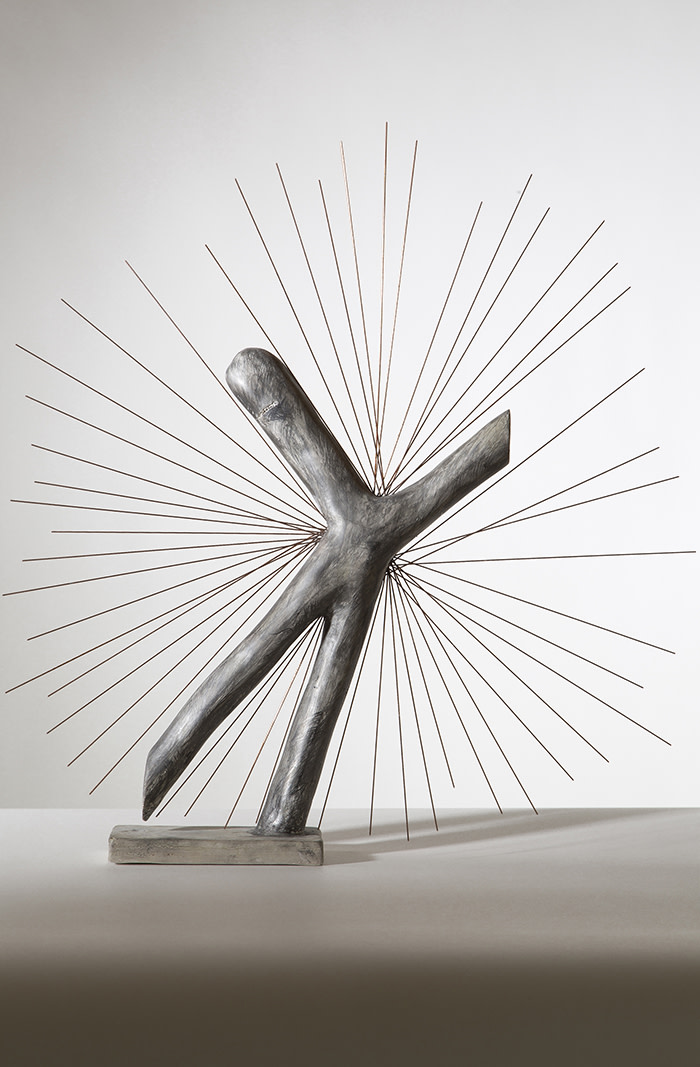
Finally, however, partly thanks to Saatchi’s patronage, David was making a living from his work. Now he could start to evolve his practice into the Pandora’s box of light and shade, innocence and eroticism, graphics, sculpture, painting and textiles that stamps him as one of contemporary art’s most original practitioners today.
With his family rooted in multiple craft traditions — “my brother is a leatherworker, my sister is an antique restorer, my mother was a dressmaker, my father a furniture maker” — what David describes as his “total lack of inhibitions about making things” is easy to comprehend.
More complex are his metaphysical underpinnings. Given that the figure has remained a constant theme, despite the myriad variations in media and imagery, I ask why bodies continue to captivate him.
For the first time, David is at a loss for words. After a long pause and several false starts he finally answers: “I find abstraction admirable, but I wish I could be as sophisticated as to relinquish the need for the embarrassment of the presence of the body. The act of witnessing [that embarrassment] generates in me a sense of hope.”
I can’t pretend to understand this statement entirely but I am intrigued by its oblique, provocative elegance. David, meanwhile, picks up an old photograph of one of his embroidered figures, in magenta and black stripes, that he made back in 1999. “If I could only keep them as cool and detached as that,” he says, looking at the mask-like visage. “But somehow I moved on to becoming more and more overt. Basically I unveiled what there was lurking beneath.”
Is he nostalgic, then, for the tabula rasa of his early surfaces? “No, not at all!” he declares firmly. “It is a more useful and rich endeavour trying to befriend the darkness that lies beneath. That is what I invite people to do.”
I leave still uncertain how to square the luminous, unruffled personality I met with the artist-cum-analyst bent on foraging in the shadow side of our psyche. Then I pass again that enigmatic sculpture in his studio. The bum keeps shtum but maybe those two heads are telling me something after all.
Michael Werner, to November 24, michaelwerner.com ; ‘Gradations of Slow Release’, MCA Chicago, to March 10 2019, mcachicago.org
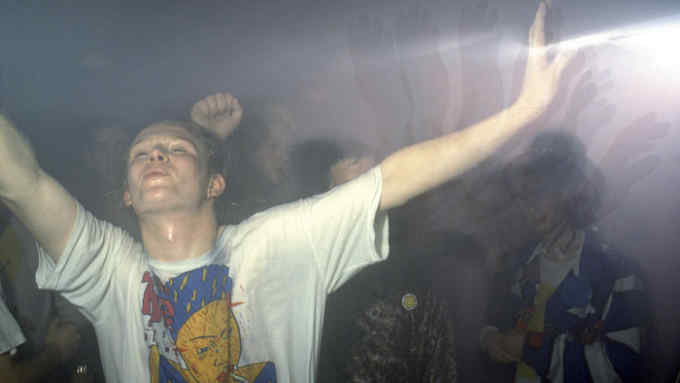
Comments